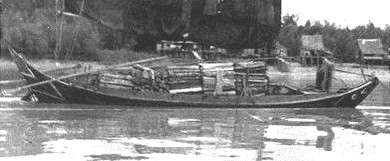
Twakow or Twaqo
The forgotten workhorse of Singapore (1819 -1982)
1e launched: 28 february 2009 2e revision: 4 november 2012
NOW on sale: Modeldrawing Twakow at www.modelbouwers.nl
Ordernumber: 10.02.020 with English and Dutch building instuctions.
Singapore, as we know it today, started when Raffles signed a treaty in 1819
with the Temenggong and a freetrade zone was established..
The transit trade started on the north bank, but soon after the south bank was in use.
This part was asigned to the Chinese immigrants from Hokkien and Teochew.
They build the twakow, first used as a small coastal trader and later
as a lighter to (un)load ships at the Singapore roadstead .

This is the oldest picture I could find.
Through time the use of the ship has changed and so changed their appearance.
William Maxell Blake gives a description of the twakow in American Yachting Montly in the year 1928 or 1929.
The plan is still available at the Smithsonian Institute.
The article by Lieutenant Commander D.W. Waters, R.N. in the mariner's mirror no. 32 from 1946 was the start for this webpage.
If you put colour to the drawing it gives a different appearence.
Unfortunately I got a black and white photocopy so no details where visible enough to explain the
differences between the sideview and the topview.
On the Internet I got enough picutures of the modern variation, the bumboat, but they used no sails any more.
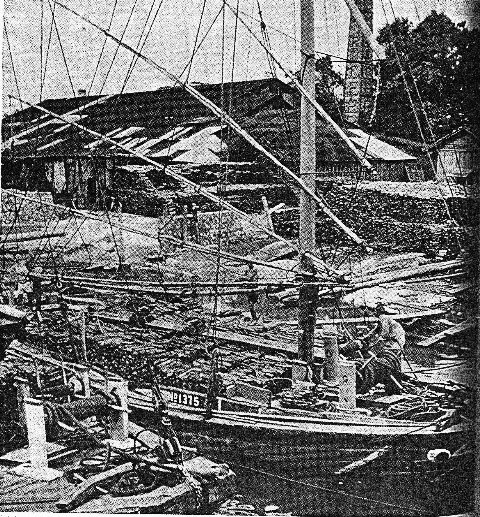
Through internet friends I got the above picture, which explained why there is only one winch in Waters frontview drawing
and not two as in the top view..
Each winch has it's own place, to raise the sail close to the mast and to raise the anchor more up front.
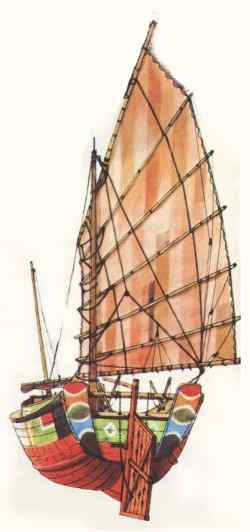
In this drawing the rudderwinch sits high up and the foot of the rudder still sticks out under the ship.
If you lower the rudder in the sideview drawing off Waters the helm will rest on the winch and will not
stick out under the ship enough.
The rudderwinch has disappeared on the Bumboats and in the drawing of William "Max" Blake it
only lays a few inches above the deck .
This poses a question because the article off Blake was published before Waters article: so who is right?!

In this picture, taken before the war, the transition from sailing coaster to harbour lighter is best viewed.
The high wings are still there but the rudderwinch is gone.
Instead of beaching they only moor at the riverbank.
In this picture you can see that the loading capacity has increased ,
therefore the ship is longer and wider.
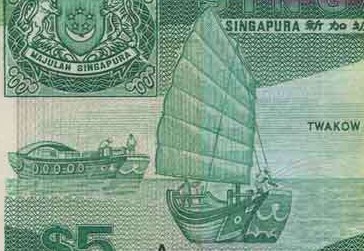
The difference in appearance is shown in this 1986 banknote.
Very informative but no use for building a model.
To build a model based on Lieutenant Commander D.W. Waters, R.N. article I had
to obtain the original photo's.

plate 3 (a) Deck view of typical twaqo
This is the 1e photo .
De anchorwinch is up front and the sailwinch next to the mast.
The tabernacle which supports the mast is clearly visible.
The mast is secured with 2 or 3 iron fids to the tabernacle.
The horse, to take the sailingboom, is fitted to the bulkhead and there is no space
between the bulkhead and the poopdeck as suggested in the topview drawing.
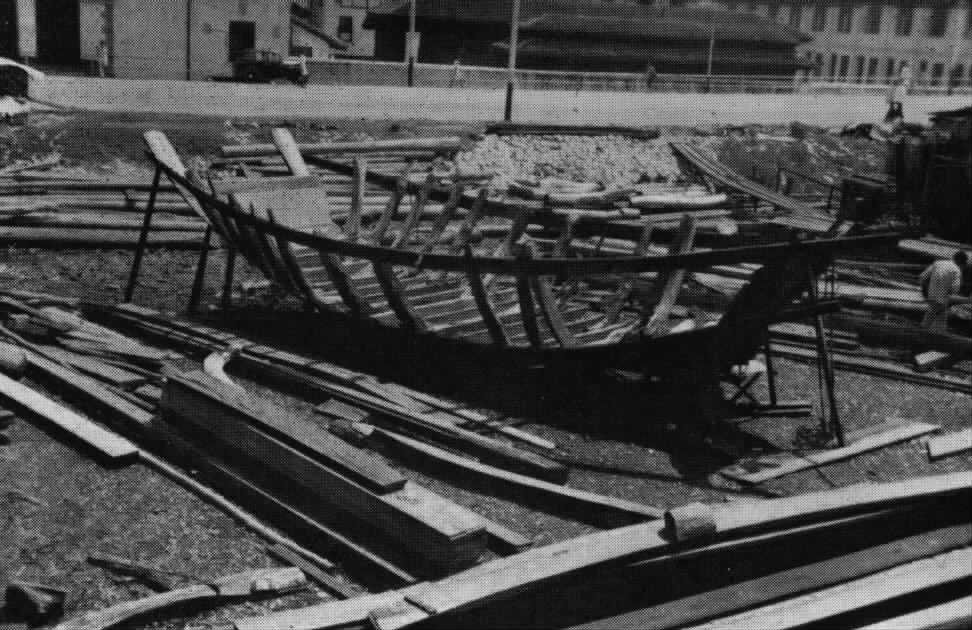
plate 3 (b) Twaqo under construction
This 2e photo shows cleary the wings on the transomboard (left)
The bulkhead (right) is not the stemboard, but a collision bulkhead.
The ribs for the sailing timber are placed under an angle.
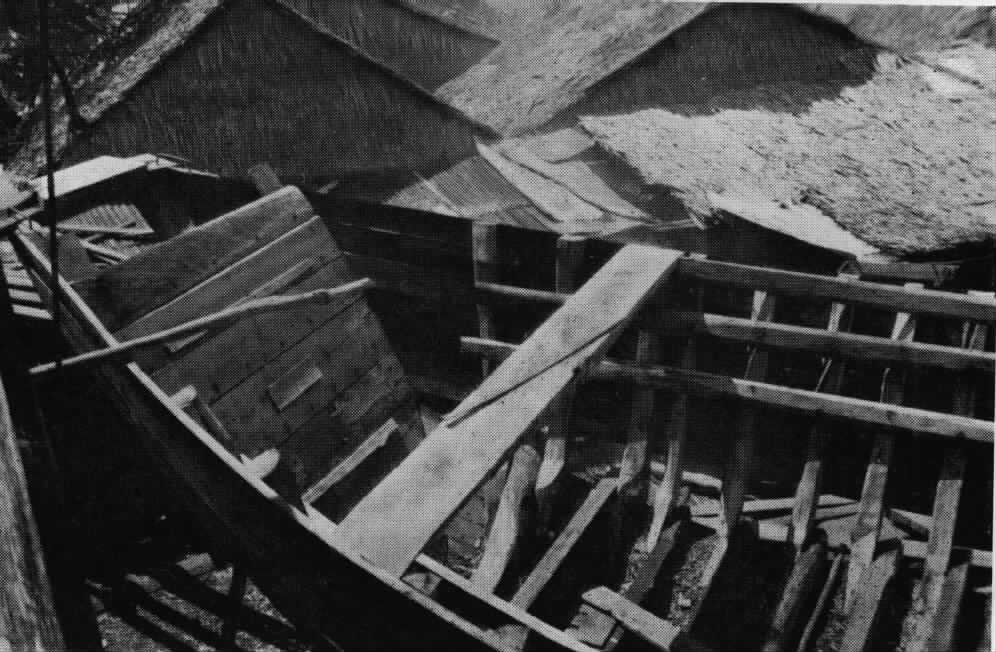
plate 3 (c) bow of twaqo under construction
The collision bulkhead is in place.
The sailing beam gives rigidity to the structure..

plate 4 (a) Bow view of twaqo beached for discharging
Striking detail of the gripe ( loefbijter), and dubble planking at the underside of the bow.
The hole in the starboard side affirms Waters remark that the stemplate was not fitted watertight.

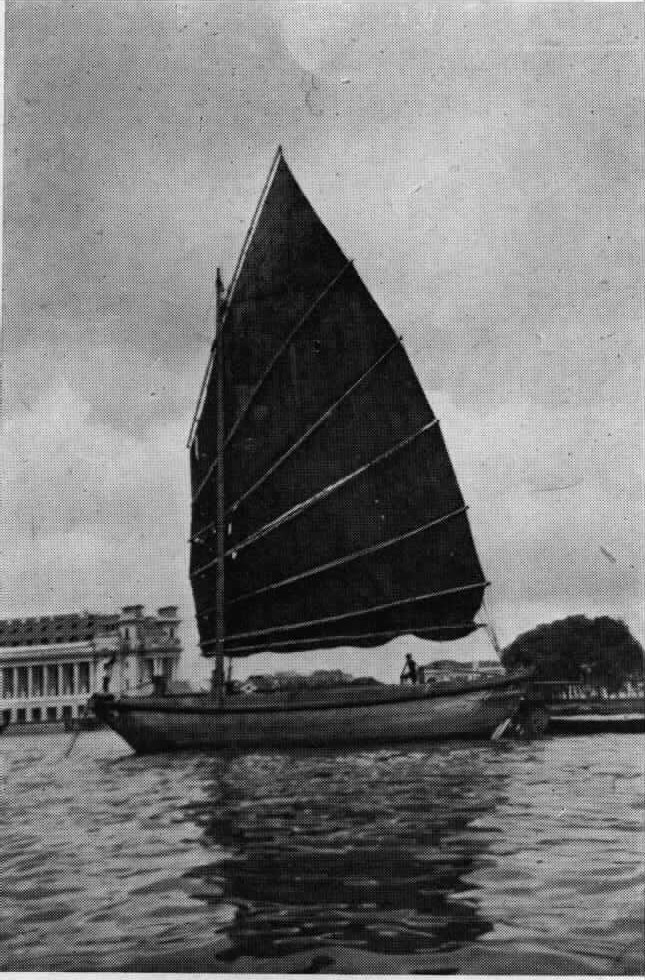
Plate 4 (b) laden twaqo under sail Plate 4 (c) empty twaqo drying sail
In the left picture the anchorwinch seem to be located next to the mast but not so in the righthand picture.
Based on the measurements from Waters the loading capacity of a twakow is about 50 tonnes.
After the 2e world war capacity of 100 tonnes or more where normal.
The sails disappeared and towing became common, until they where large enough to fit a dieselengine for selfproppulsion.
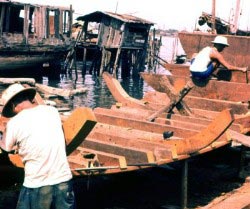
a rare photo of a wharf in Singapore

The green colour signify ownership by a Hokkien chinees .
The eye (oculus) is a reminiscence of the Arabian dhow's.
History of Singapore river
1819 - 1900
After Raffles established the free trading zone the English colony grew fast.

At the crossroads of shiping, (see map), trading was favourable.
Rice, wood, sugar and gambier where transshipped
The wood for houses and ships where transported to Singapore by tongkungs (spitsgatschepen) .
The twakow was used for bulkgoods such as firewood, sand and gravel, and quaried stone.
They where loaded to there maximum, so the water touched the garboard.
Waters is perpentual surprised that it does not burst asunder.

The sampan is for passenger transport on the rivier.
As in 1869 the Suez canal is opend more trafic came to Singapore.
From 1904 on the rubbertrade grew in importance.
Because the harbour trafic increased, the role of the twakow changed from coastal trader to habour lighter (bumboat)
In this new role all the sailing equipment and fittings disappear.
1900 - 1983
The sailing twakow disappears.
After the 2e world war seaships became bigger and bigger and so the twakow.
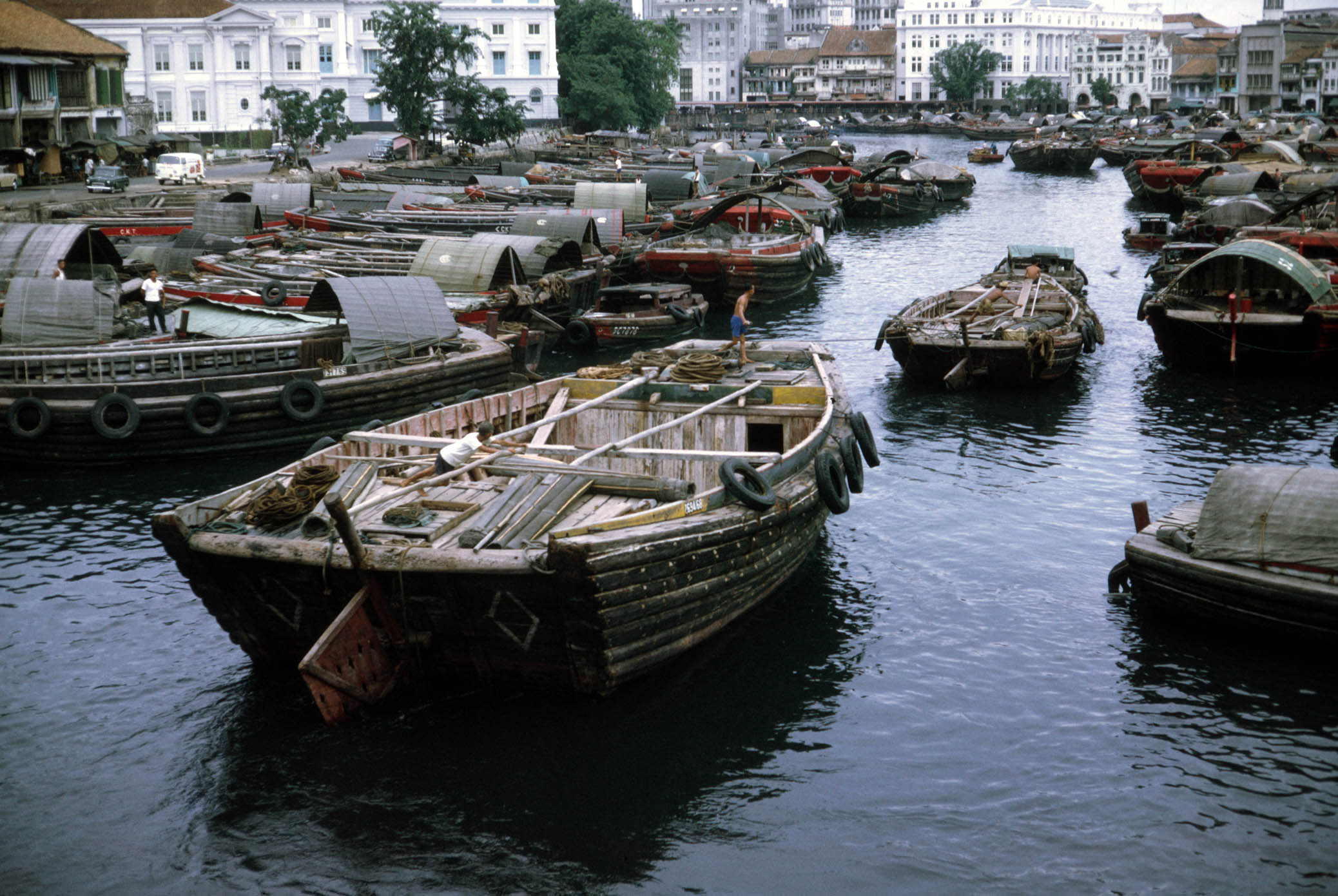
After 1960 they are big enough (more then 100 ton) that there is space for a dieselengine, which makes them more reliable.
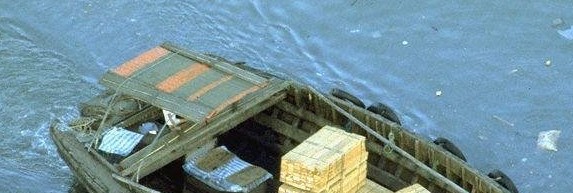
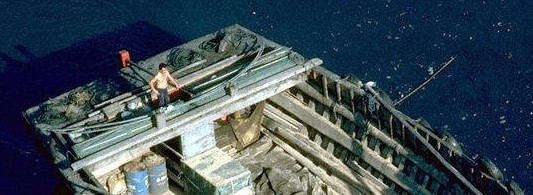
In the '80 the shipsizes became to big to sustain the methode of loading/ unloading, which is very labour intensive,
notwhitstanding the use of mobile cranes at Boat Quay to speed up the (un)loading.
Containers marked the end off a long tradition.
The port of Singapore authority was already busy to extent the harbour docks at the seaside.
In 1977 the clean river project was started
and Singapore becomes more and more a commercial service centre with highrise office buildings.
In 1983 Clark Quay, Boat Quay and Robertson Quay where cleared.
All ships go to Pasir Panjang and the big cleanup of the river starts.
Linda Berry takes pictures in these days of the river and surroundings and tells how fast the old buildings disaprear,
so avery picture has to be right.
In the book Singapore Lifeline Marlene Tanzer shows the difference before and after the cleanup.
The belly of the carp (south riverbank) brings fortune to the Chinese owners.
The old quays have new functions:
Clark quay (entertainment) with tourist attractions, restaurants and bars.
Boat quay (commercial) banking and offices
Robertson quay (residential) .
The bumboat does not totaly disappear, because 2 became floating restaurants and a smaller type bumboat sightseeing boats.

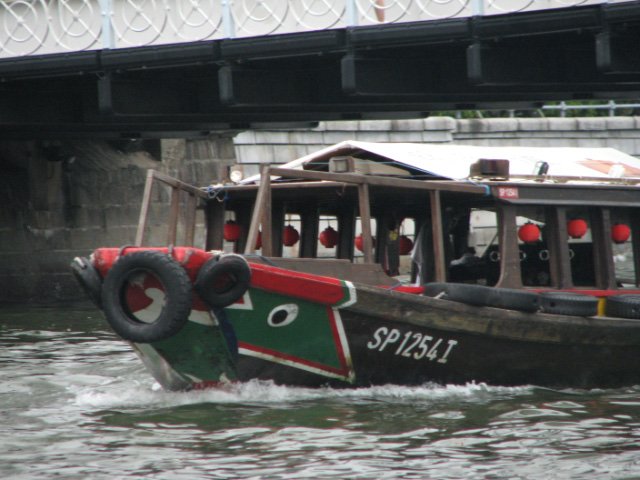
The sightseeing boats are now under threat, because of there stinking dieselengines.
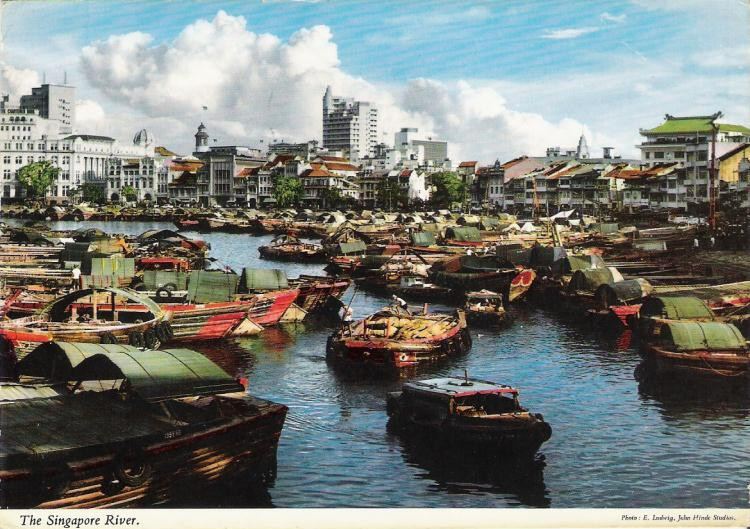
"The duty of twakowmen was to look after the goods once they were loaded on the twakow.
We had to count the goods, stack them in proper order, and cover the goods whenever it rained.
We could not relax untill all goods were cleared.
The responsibility was very heavy" Tan Chee Soon, twakowman
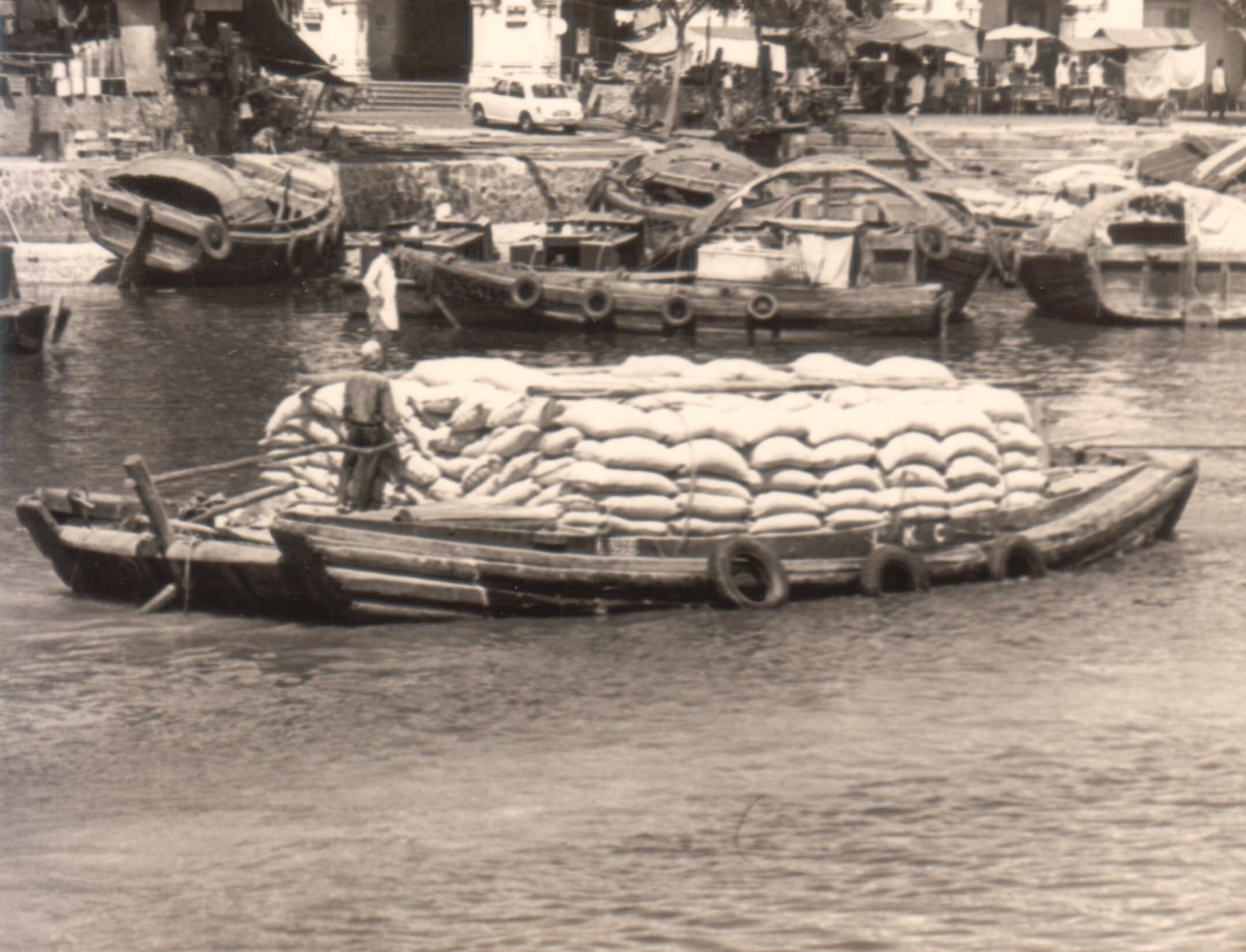
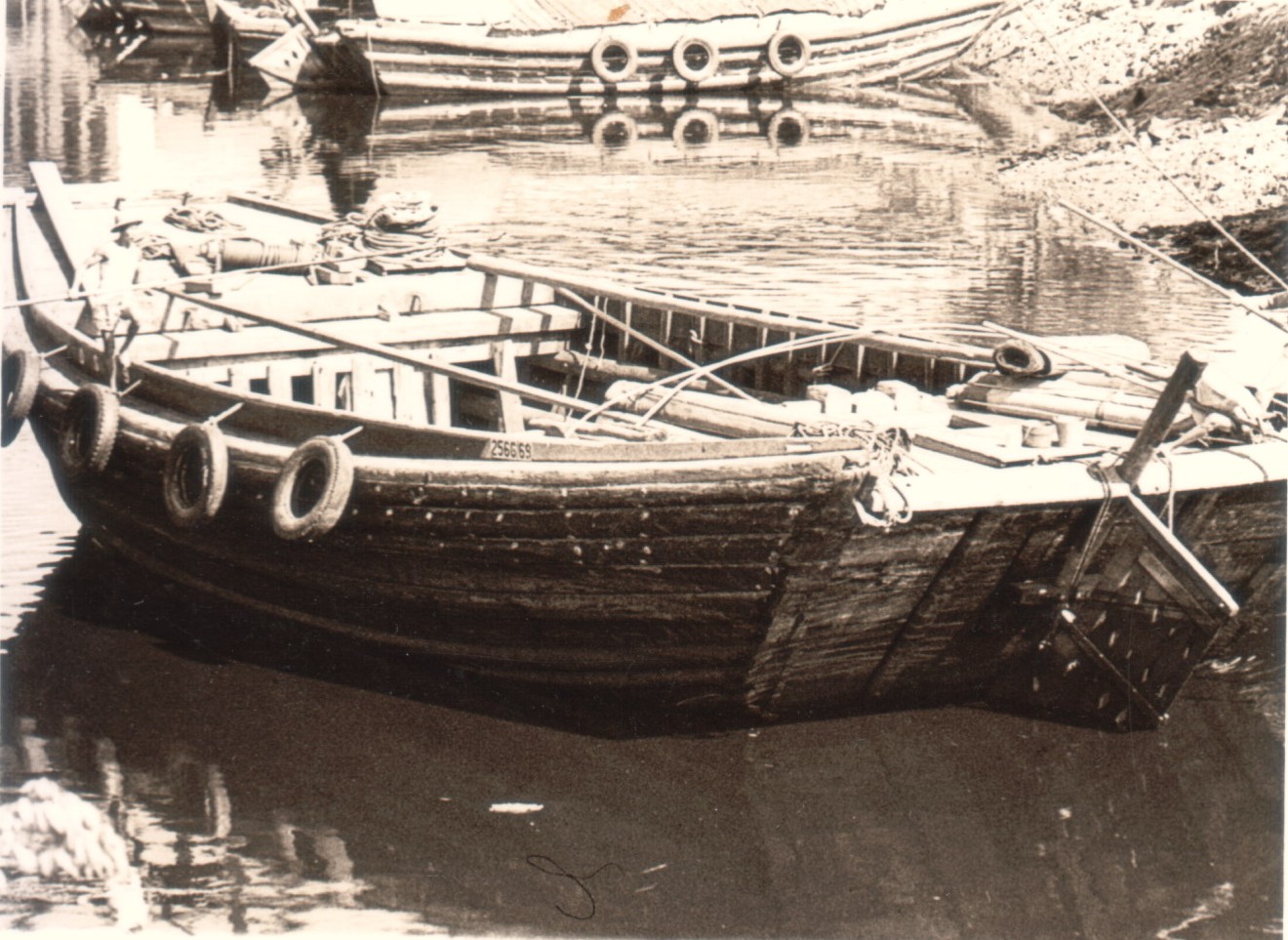
Literature:
Chinese junks the twaqo by Lieutenant Commander D.W. Waters, R.N. , the mariner's mirror no. 32 (1946)
The twakow by William Maxell Blake, American Yachting Montly (1928 or 1929)
Singapore Lifeline The river and its people by Marlene Tanzer 1986
Singapore's river a living legacy by Linda Berry 1982
Chinese Junks and other native craft by Ivon A. Donnelly reprint 2008
Back to hoofdmenu www.ebedejong.nl
Like hiking wandelen
Society the zeilpunter (Dutch punter)
more
information: ebe.dejong@quicknet.nl